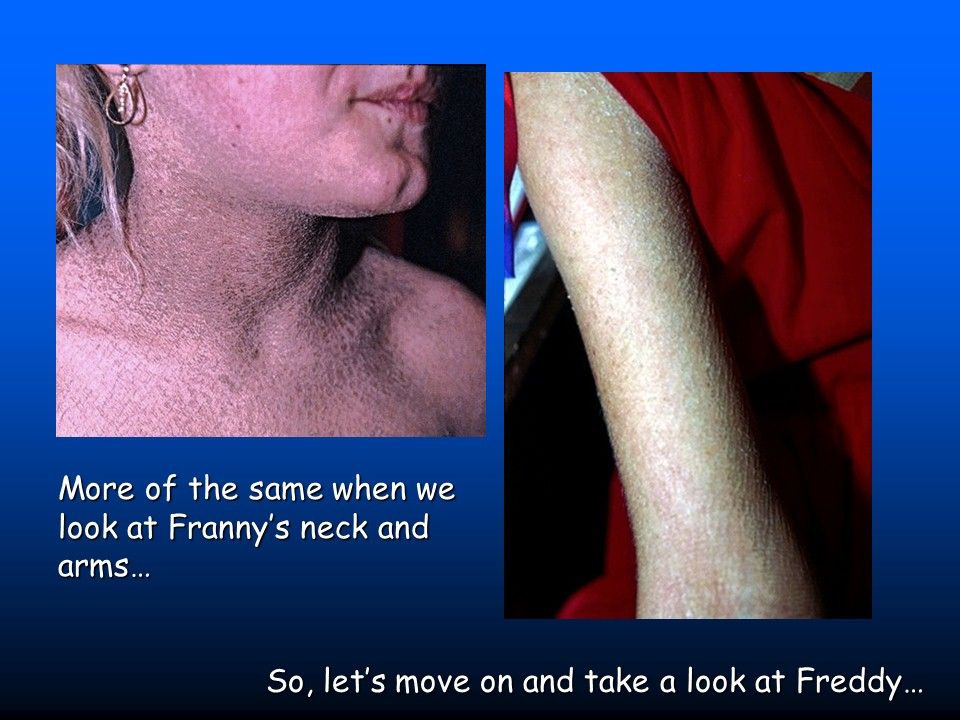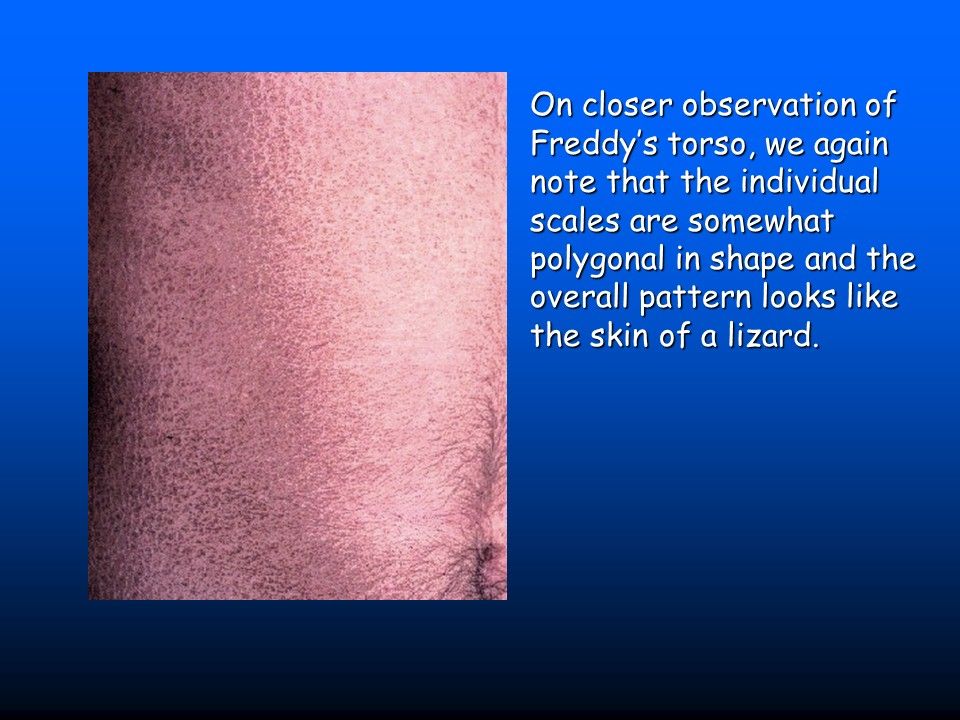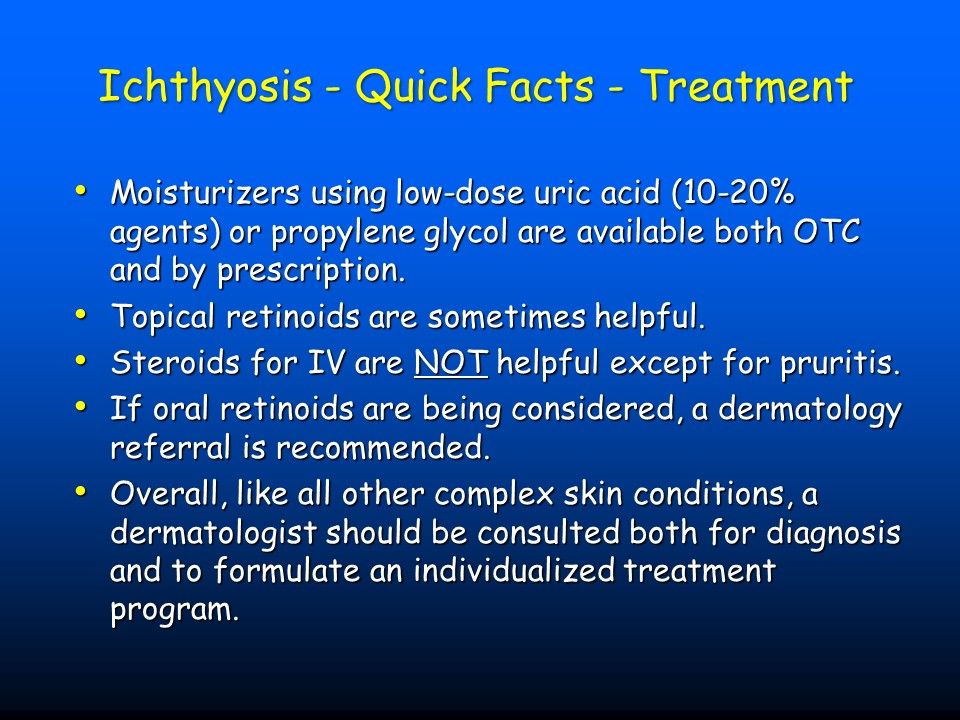© 2025 MJH Life Sciences™ , Patient Care Online – Primary Care News and Clinical Resources. All rights reserved.
A Family with Flaky Skin
Three siblings share a scaly, lizard-like rash. Neither parent has the condition. What do you think this could be?
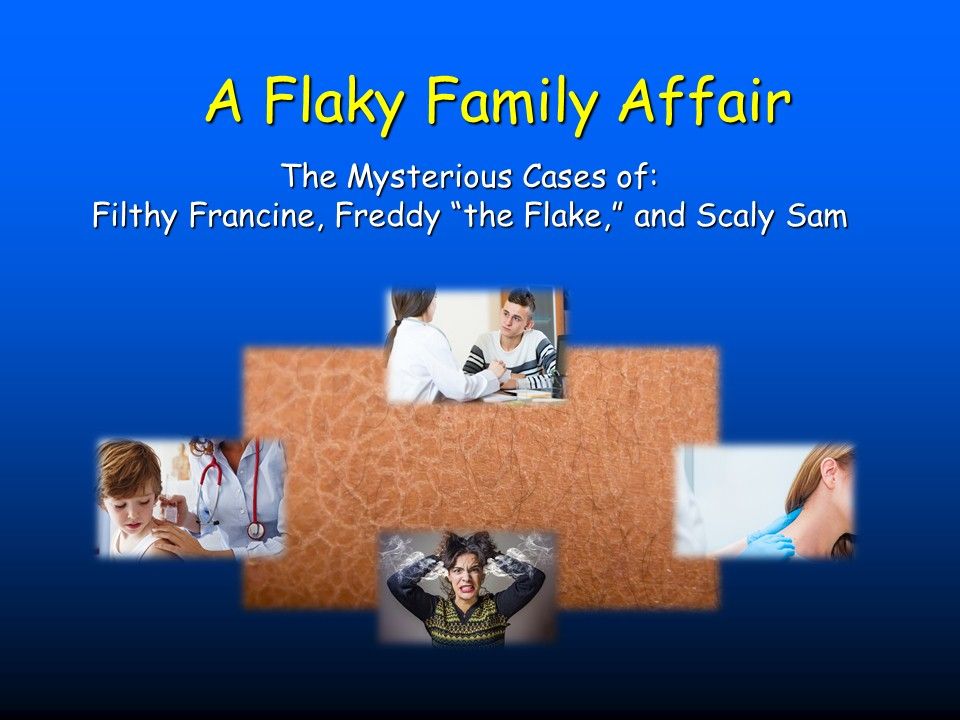
Dr Jonathan Schneider walks through another case from his files seen in the acute care clinic. How would you diagnose the 16-, 12,- and 5-year-old Atopy children in this Flaky Family Affair?
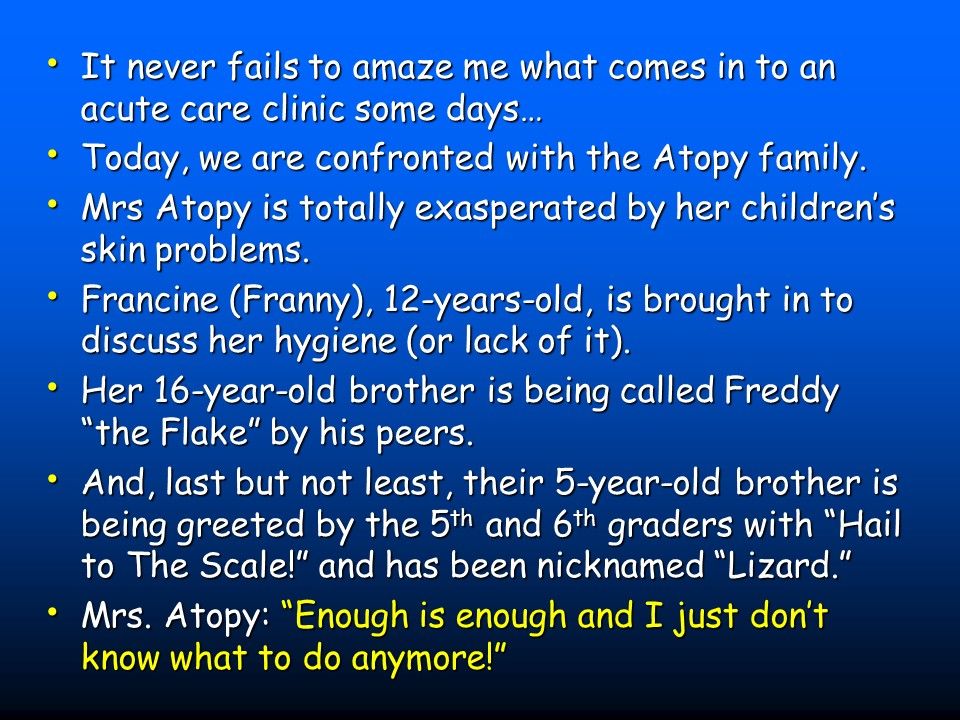
Family presents with 3 children with similar skin problems: 12-year-old girl and brothers ages 16 and 5 years; latter 2 are teased by peers for scaly, "lizard-like" skin condition.
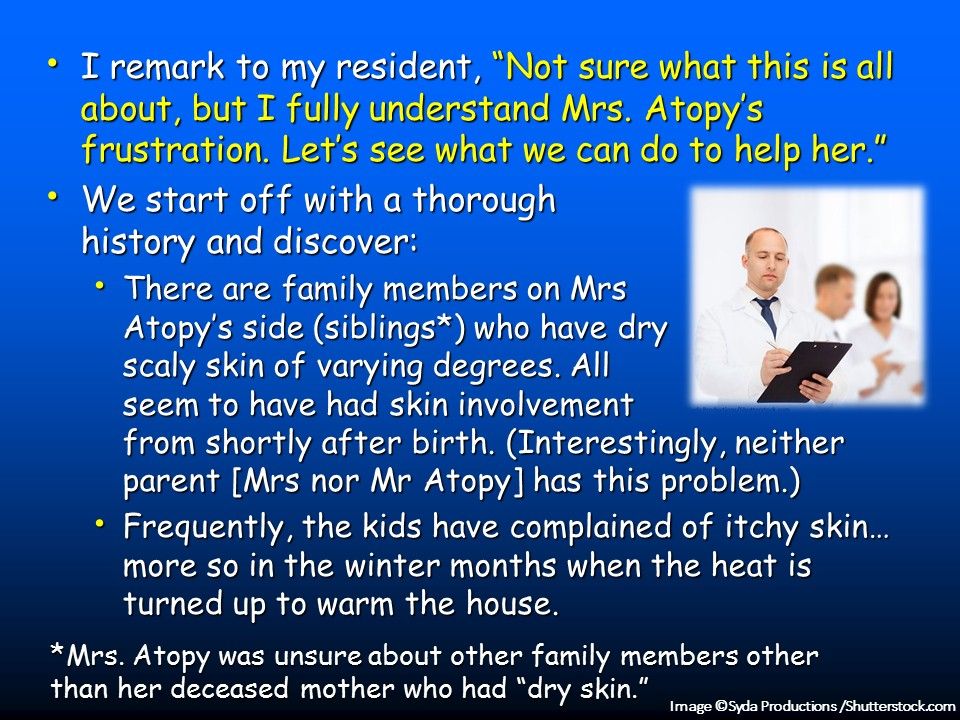
Family history: Mother’s siblings have dry, scaly skin of varying severity, present since childhood; mother is not affected nor is her husband, childrens’ father.
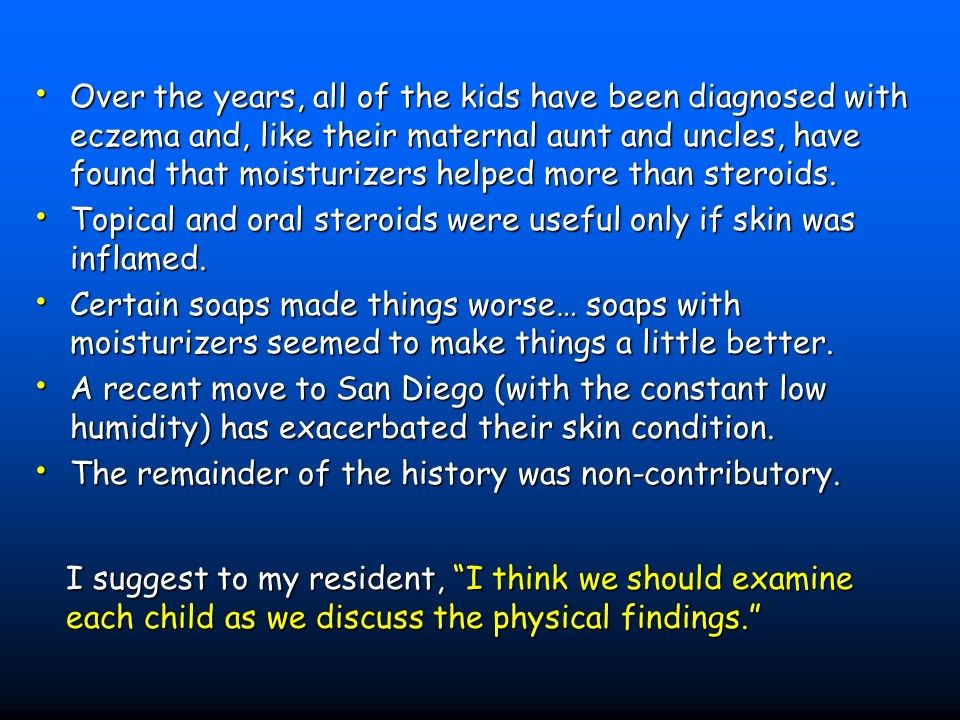
History: Children have all been diagnosed with eczema over time; have gotten relief from moisturizers; topical/oral steroids only useful if skin was inflamed.
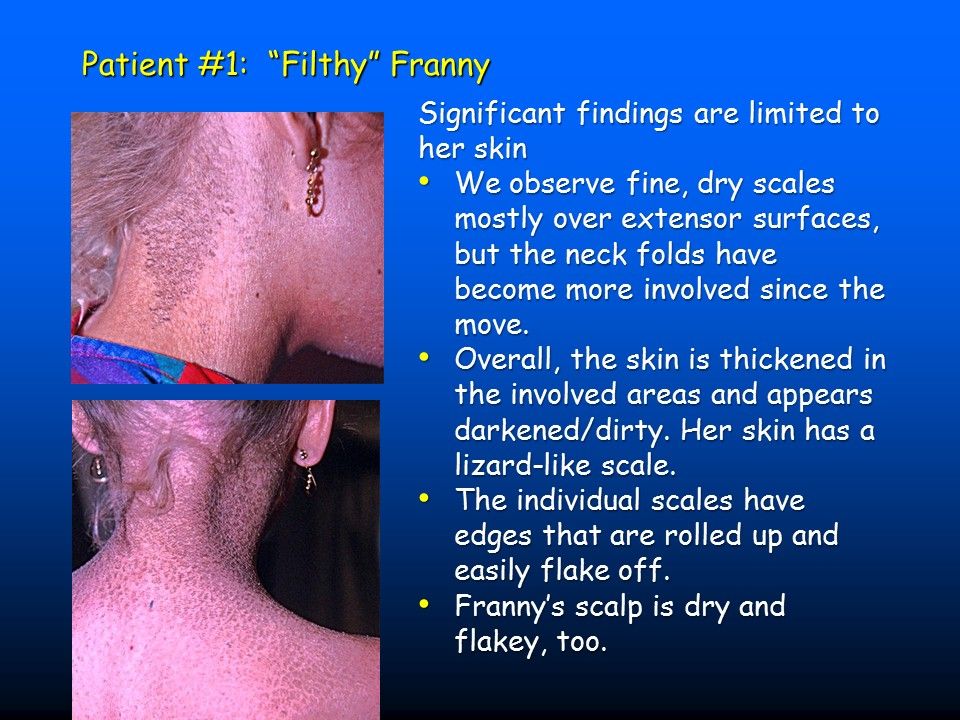
12-year-old girl: Significant findings are limited to her skin; fine, dry scales mostly over extensor surfaces; skin is thickened in the involved areas, appears darkened/dirty.
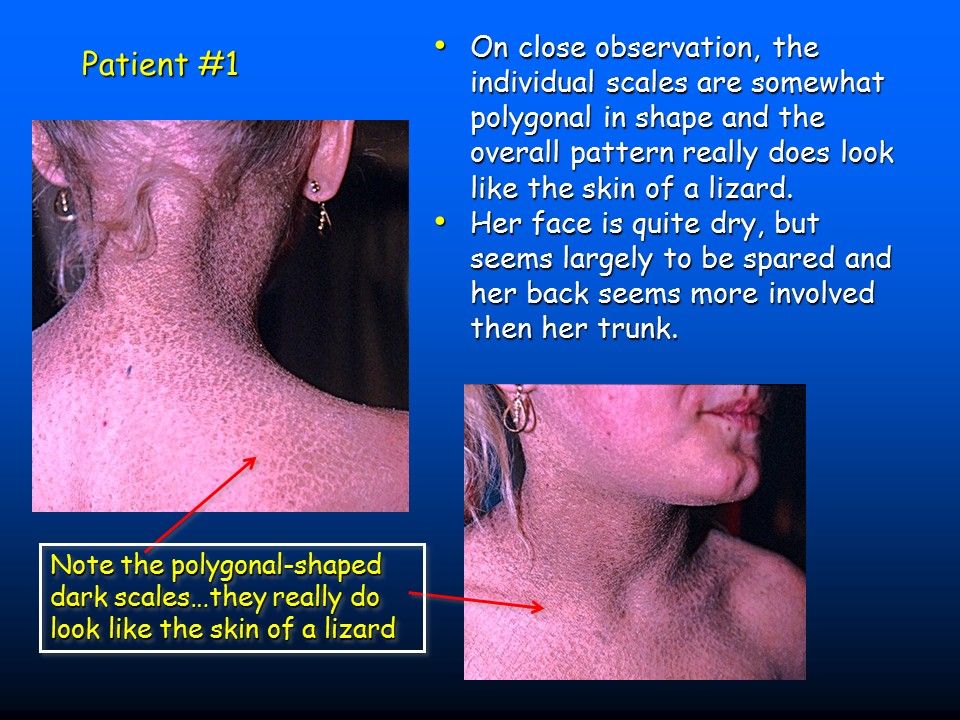
12-year-old girl: individual scales are somewhat polygonal in shape; face is quite dry but spared; back more involved than trunk.
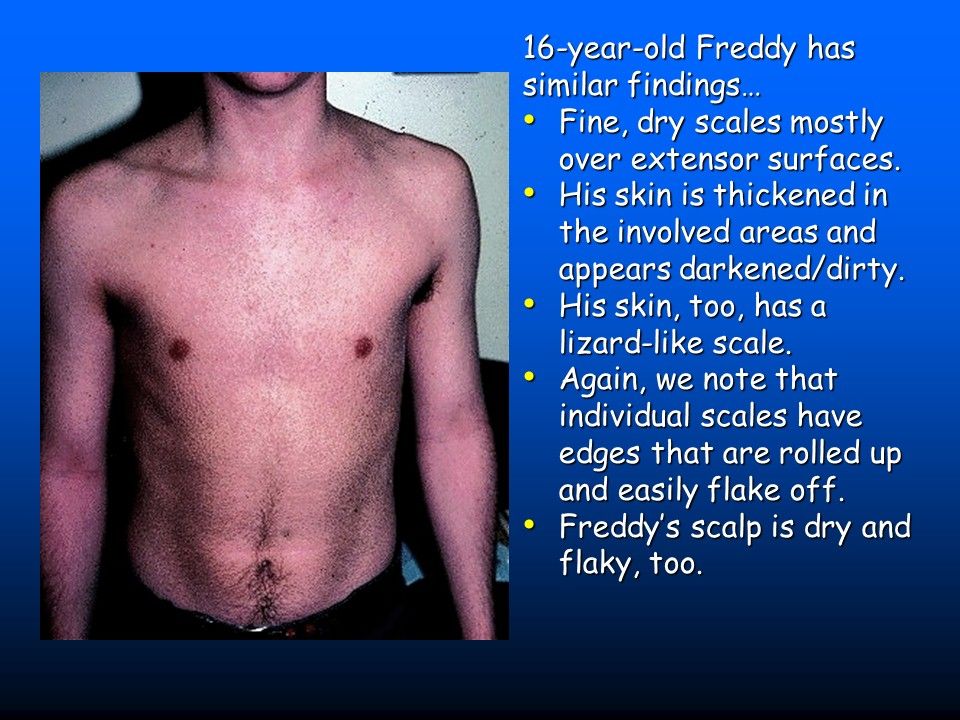
16-year-old boy: Fine, dry polygonal-shaped scales are seen mostly over extensor surfaces; individual scales have edges that are rolled up and easily flake off.

5-year-old boy: This child has less and less severe skin involvement than siblings but mother reports it has gotten progressively worse; abdomen and scalp produce "avalanche" of scales if brushed.

Differential diagnosis: Xerosis, allergic contact dermatitis, asteatotic eczema, drug eruptions, ichthyosis of some variety; impetigo, irritant contact dermatitis.
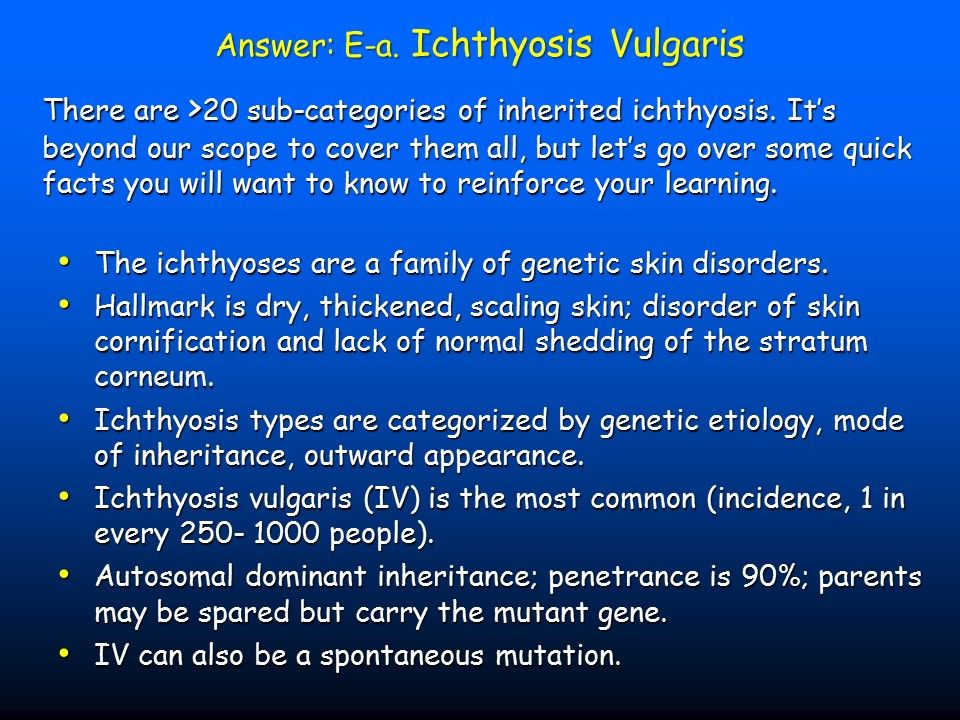
Diagnosis: Ichthyosis vulgaris (IV). Ichthyoses are a family of genetic skin disorders. Autosomal dominant inheritance. IV is the most common; hallmark is dry thickened skin.
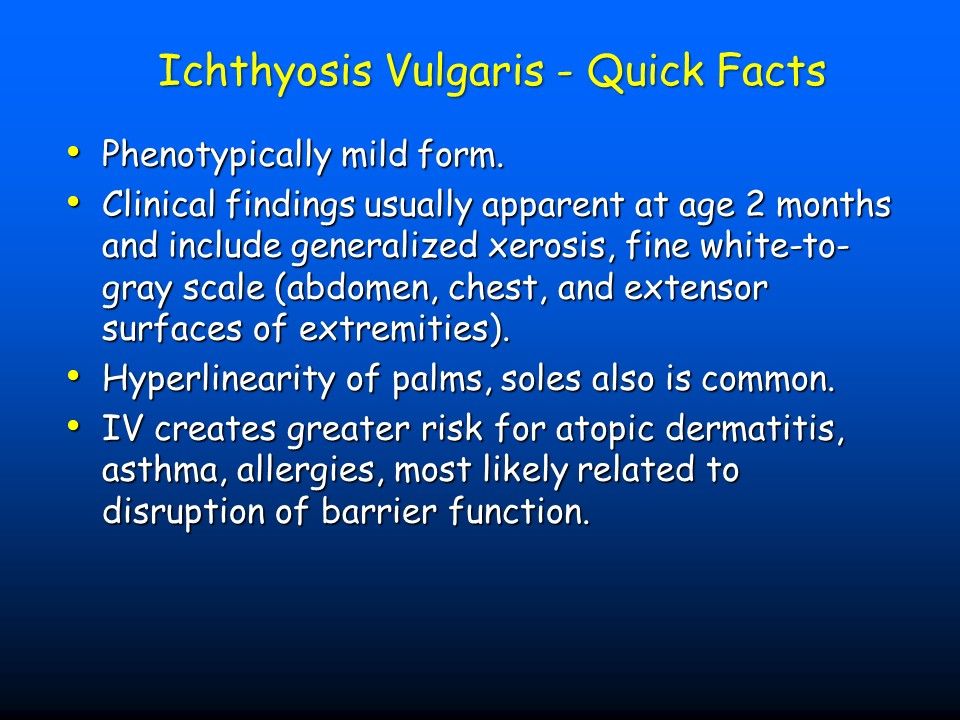
IV is phenotypically mild form; findings tend to appear at age 2 months-generalized xerosis, fine scale; IV increases risk for atopic dermatitis, allergy, asthma.
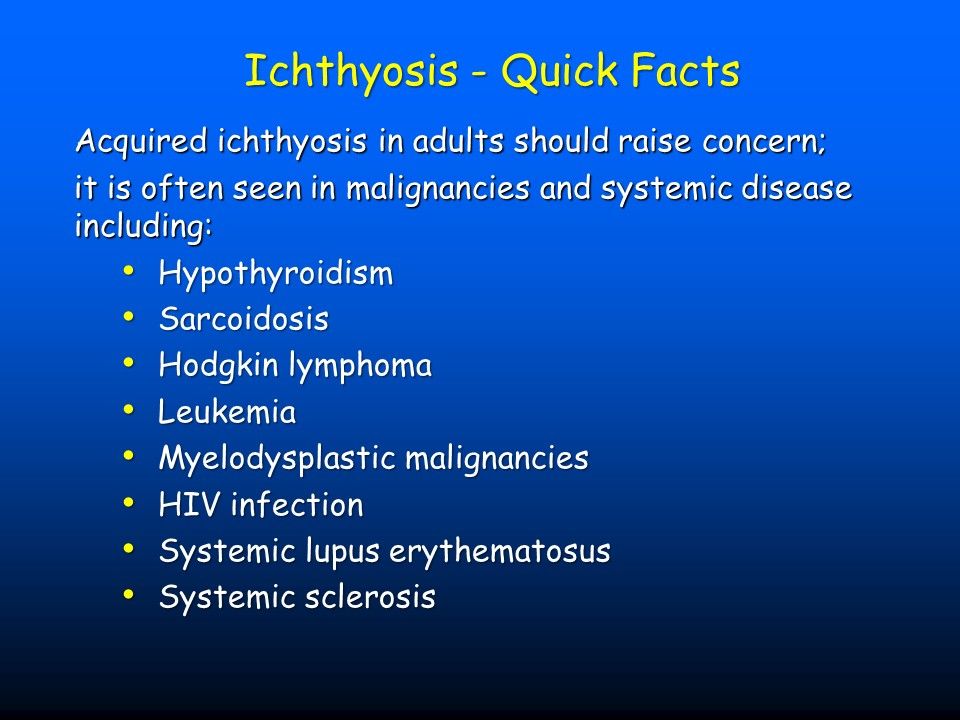
Acquired ichthyosis in adultsshould raise suspicion for malignancies and systemic disease, eg, hypothyroidism, sarcoid, myelodysplastic malignancies, HIV, systemic sclerosis.
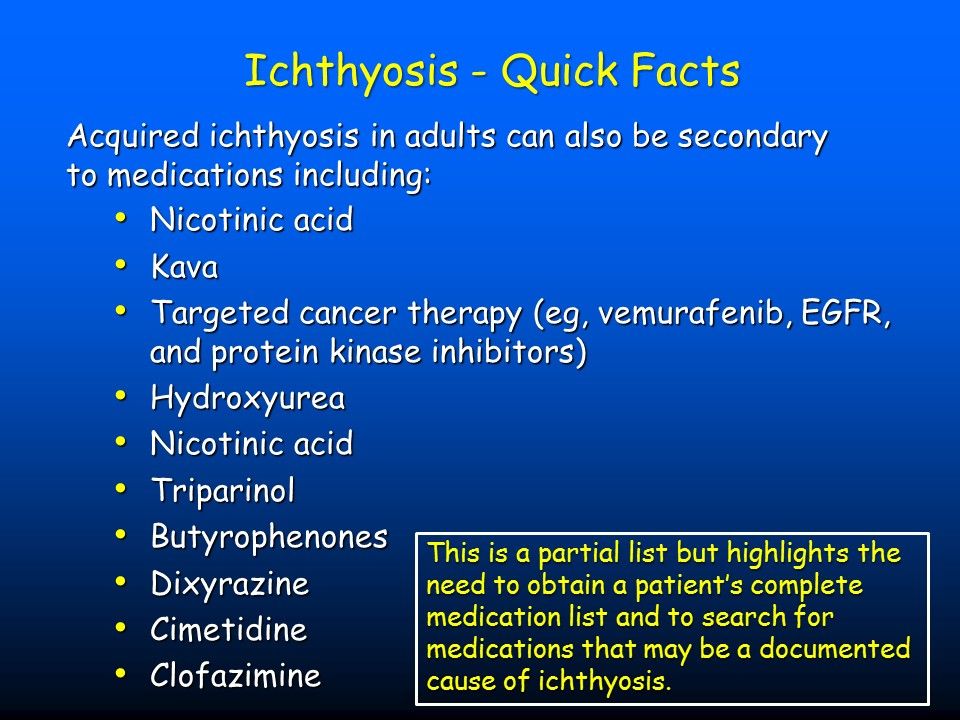
Acquired ichthyosis in adultsmay be a drug reaction to agents including nicotinic acid, kava, targeted chemotherapeutic agents, butyrophenones, disyrazine, cimetidine, clorazimine; others.

Follow-up of 3 siblings: The children responded well to a combination of moisturizers, keratolytics, and hydrating agents.
Three siblings are seen for a somewhat disfiguring skin condition that has made them the brunt of teasing among their peers. It is characterized by polygonal-shaped scale that makes the skin appear lizard-like and in the case of the 12-year-old girl it is dark enough to look like dirt.Neither parent is affected by the condition but there is a positive family history.

